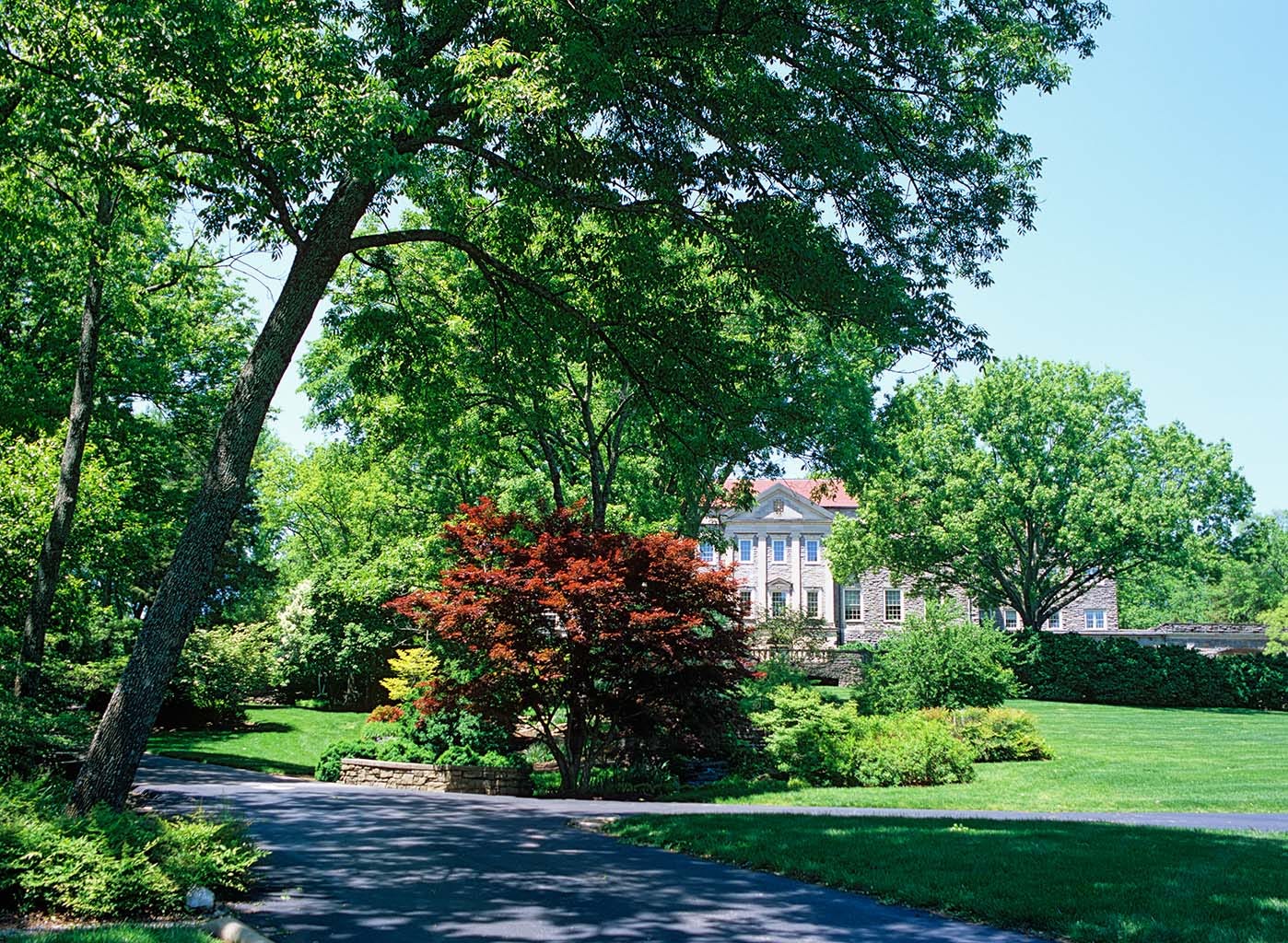In 1896, Leslie Cheek and Mabel Wood were married. They settled in Nashville, Tennessee. The Cheeks were in the wholesale grocery biz, and Leslie’s cousin had perfected a blend of coffee that was served in Nashville’s Maxwell House Hotel. Leslie put some money into his cousin’s business, and got filthy rich when the Maxwell House Coffee brand was sold.
The next year, he fulfilled a promise to Mabel to built a house that would hold a gigantic mirror that she owned. Filthy rich, they built a mansion on 100 acres in the hills west of Nashville and named the estate after themselves: Leslie Cheek + Mabel Wood = Cheekwood. It is now a privately-owned park that is open to the public.
I have never been inside the mansion. Here is the one and only shot I ever took of it, mostly obscured by the scenery:
It was always the outside that fascinated me. A fortune (literally) was spent on various gardens around the property, and they are beautiful to behold on the 55 acres that remain. There is an herb garden, a dogwood garden, a seasonal garden, a rose garden, a water garden, a Japanese garden, and my favorite which is not there any more, a wildflower garden complete with a frog pond, and some more that I don’t remember. Since I made many trips there with the various cameras I owned at that time, there will be more than one post here on Substack of this place.
Let’s start with a view off the left side of the mansion, looking more or less south:
Below the mansion is a carefully sculpted water garden:
The stream from which continues onto the lower portion of the property:
Yes, “Good to the Last Drop,” indeed. And here’s a peek into the Japanese Garden, as seen while coming through the entrance:
Next: the blooms of Cheekwood: flowering trees, shrubs and forbs.









Very nice tour. The "Water Garden" picture got my attention as that is the first time I've seen a rock watercourse that doesn't look forced. So often I see attempts made to build a waterfall or pond to look "natural" but they nearly always appear fake and "man-made". Of course a century of nature growing around it helps, but that one looks like something one would encounter on a hike through the woods. Good job, Ken.